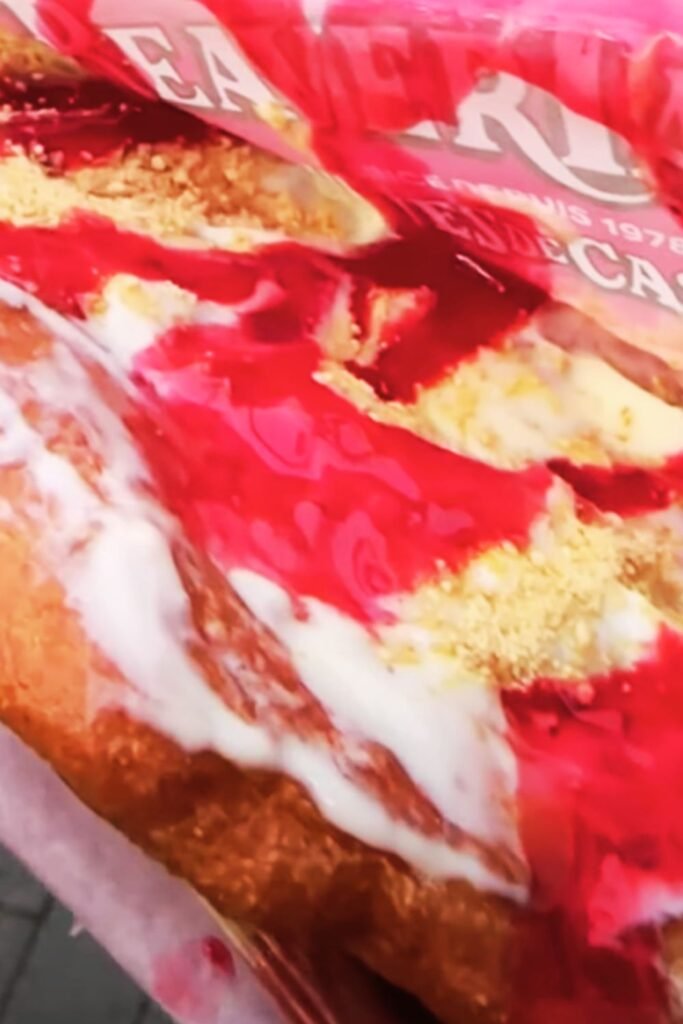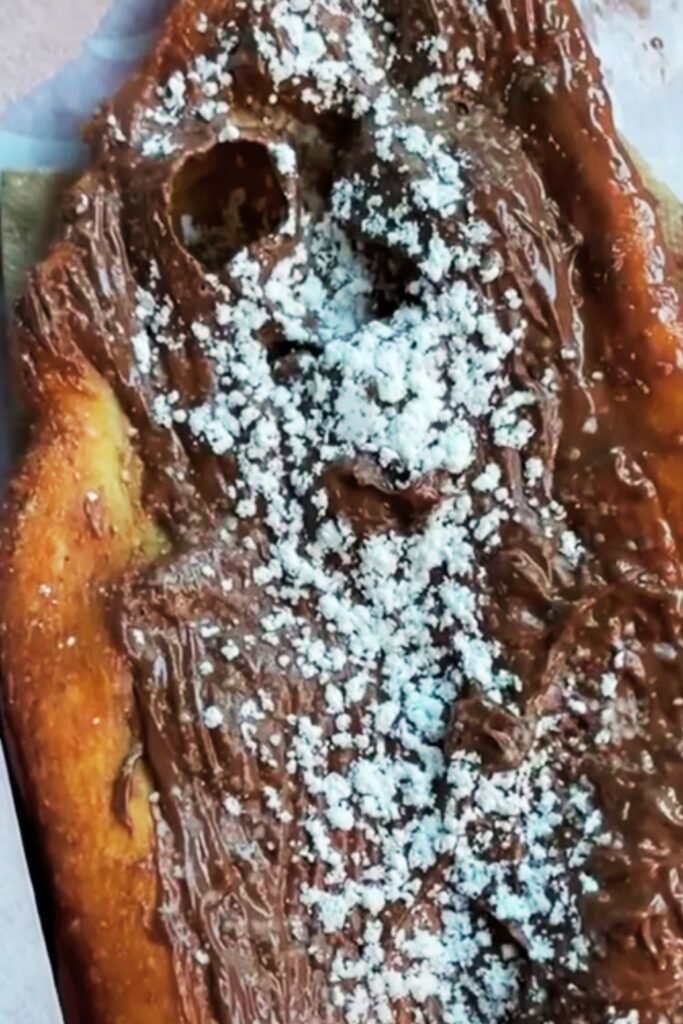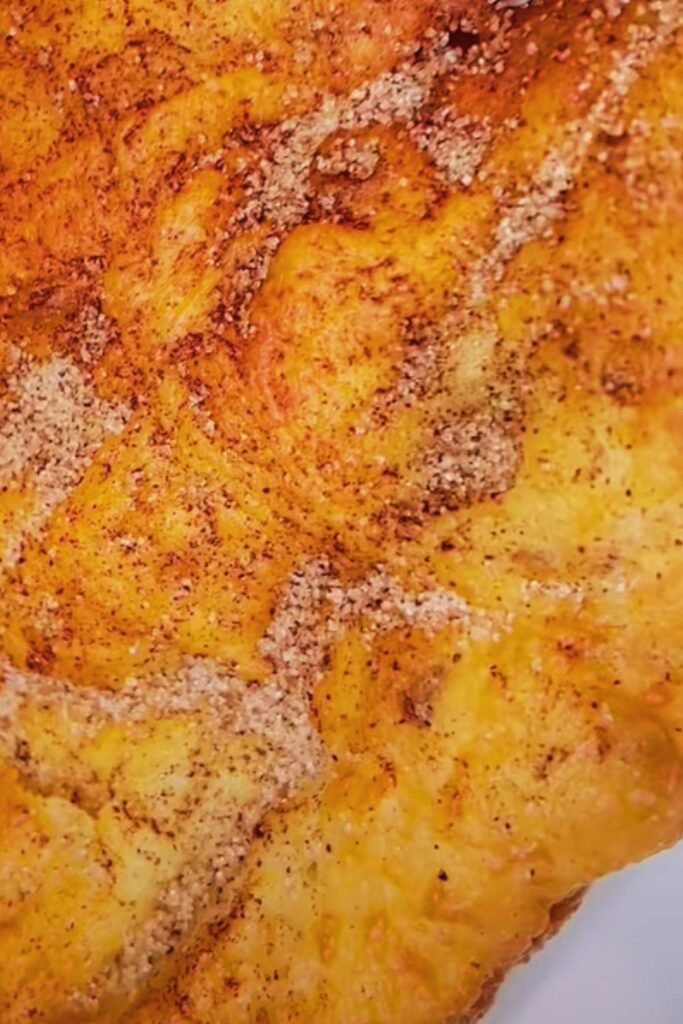When I first encountered the concept of stuffed cookies, my baking world transformed entirely. These aren’t your ordinary cookies – they’re edible masterpieces that combine the comfort of classic chocolate chip cookies with the whimsical charm of monster-themed treats. The Big Blue Monster Stuffed Cookies have become my signature dessert, captivating both children and adults with their vibrant appearance and surprising filling.
The magic behind these cookies lies in their dual nature. From the outside, they appear as delightfully chunky, blue-tinted cookies dotted with chocolate chips and candy pieces. However, the real surprise awaits inside – a gooey center filled with your choice of chocolate ganache, cookie dough, or even marshmallow fluff. This technique of creating stuffed cookies has revolutionized my approach to baking, allowing me to experiment with flavors and textures in ways I never imagined possible.
Understanding the Monster Cookie Phenomenon
Monster Cookies: Large, loaded cookies containing multiple mix-ins like chocolate chips, candies, nuts, and other confections, often characterized by their oversized appearance and colorful presentation.
Stuffed Cookies: A baking technique where cookie dough is wrapped around a filling, creating a surprise center when bitten into.
Blue Food Coloring: Gel-based coloring agents that provide vibrant hues without altering the cookie’s texture or moisture content.
The Big Blue Monster concept emerged from my desire to create something that would appeal to both the visual senses and taste preferences of my family. The blue coloring transforms ordinary cookie dough into something extraordinary, while the “monster” aspect comes from the generous addition of various mix-ins that create texture and visual interest.
Essential Ingredients and Their Roles
Creating perfect Big Blue Monster Stuffed Cookies requires understanding how each ingredient contributes to the final product. I’ve spent countless hours perfecting this recipe, and each component serves a specific purpose in achieving the ideal texture, flavor, and appearance.
| Ingredient | Quantity | Purpose | Substitution Options |
|---|---|---|---|
| All-purpose flour | 2¾ cups | Structure and texture | Bread flour (reduce by ¼ cup) |
| Butter (softened) | 1 cup | Richness and tenderness | Margarine or coconut oil |
| Brown sugar | 1 cup | Moisture and chewiness | Coconut sugar |
| Granulated sugar | ½ cup | Sweetness and spread | Caster sugar |
| Large eggs | 2 | Binding and structure | Flax eggs (2 tbsp ground flaxseed + 6 tbsp water) |
| Vanilla extract | 2 tsp | Flavor enhancement | Almond extract (use 1 tsp) |
| Baking soda | 1 tsp | Leavening agent | Baking powder (use 2 tsp) |
| Salt | 1 tsp | Flavor balance | Sea salt or kosher salt |
| Blue gel food coloring | 1-2 tsp | Visual appeal | Natural blue spirulina powder |
| Semi-sweet chocolate chips | 1½ cups | Texture and flavor | White chocolate chips or butterscotch chips |
| Mini marshmallows | ½ cup | Monster texture | Dried fruit pieces |
| Colorful candies | ½ cup | Visual interest | Crushed cookies or nuts |
The success of these cookies heavily depends on ingredient quality and preparation. I always use room temperature butter, which creams more effectively with sugars, creating the light, fluffy base that’s essential for proper cookie structure. The combination of brown and granulated sugars provides both chewiness and the right amount of spread during baking.

Preparing the Perfect Filling Options
The stuffed element of these cookies opens up endless possibilities for creativity. Over the years, I’ve experimented with numerous filling combinations, each offering a unique taste experience.
Classic Chocolate Ganache Filling
Ganache: A smooth mixture of chocolate and cream that serves as a versatile filling or frosting.
For the traditional approach, I prepare a simple chocolate ganache by heating ½ cup of heavy cream until it just begins to simmer, then pouring it over 4 ounces of chopped dark chocolate. After letting it sit for two minutes, I stir until smooth and allow it to cool to room temperature. This creates a filling that remains slightly gooey even after baking, providing that delightful molten center experience.
Cookie Dough Center
My personal favorite involves creating an edible cookie dough filling using:
- ½ cup softened butter
- ⅓ cup brown sugar
- 2 tablespoons all-purpose flour
- Pinch of salt
- 2 tablespoons mini chocolate chips
I cream the butter and sugar, then mix in the flour and salt before folding in the chocolate chips. This mixture needs to be chilled for at least 30 minutes before use, making it easier to handle during the stuffing process.
Marshmallow Fluff Surprise
For those who prefer a lighter, sweeter center, marshmallow fluff works wonderfully. I often mix it with a small amount of vanilla extract and a few mini chocolate chips to create texture contrast.
Step-by-Step Baking Process
Creating these impressive cookies requires patience and attention to detail, but the results are always worth the effort. I’ve refined this process over many batches to ensure consistent, professional-looking results every time.
Preparation Phase
I begin by preheating my oven to 350°F (175°C) and lining several baking sheets with parchment paper. This temperature ensures even baking without over-browning the exterior before the center cooks through.
In my stand mixer, I cream the softened butter with both sugars for approximately 3-4 minutes until the mixture becomes light and fluffy. This crucial step incorporates air into the dough, creating the tender texture that makes these cookies exceptional.
Creating the Blue Monster Base
Adding the blue food coloring requires a gentle approach. I start with just a few drops, mixing thoroughly before adding more. The goal is achieving a vibrant blue without over-mixing the dough, which could result in tough cookies. The gel coloring works better than liquid alternatives because it doesn’t affect the dough’s moisture content.

After incorporating the eggs and vanilla, I gradually add the dry ingredients, mixing just until combined. Over-mixing at this stage develops the gluten too much, resulting in dense, chewy cookies rather than the tender texture we’re aiming for.
Assembly Technique
The stuffing process requires a specific technique I’ve perfected over time:
- Portion Control: I use a large cookie scoop to create uniform portions, approximately 3 tablespoons of dough each
- Flattening: Each portion gets gently flattened into a disc about 4 inches wide
- Filling Placement: I place a teaspoon of chosen filling in the center, leaving enough border for sealing
- Sealing: The edges get carefully pinched together, ensuring no filling escapes during baking
- Shaping: I roll the sealed dough into a ball, then gently flatten to about 1 inch thick
Baking Guidelines
| Baking Parameter | Specification | Notes |
|---|---|---|
| Oven Temperature | 350°F (175°C) | Consistent across all racks |
| Baking Time | 12-15 minutes | Until edges are set |
| Pan Spacing | 3 inches apart | Allows for spreading |
| Cooling Time | 5 minutes on pan | Then transfer to wire rack |
| Storage | Airtight container | Up to 1 week at room temperature |
The baking time varies depending on size and filling type. Ganache-filled cookies might need an extra minute or two, while marshmallow-filled versions bake slightly faster due to the filling’s lower density.
Troubleshooting Common Issues
Through my extensive experience making these cookies, I’ve encountered and solved numerous challenges that home bakers often face.
Filling Leakage Prevention
Sealing Technique: The method of closing cookie dough around filling to prevent contents from escaping during baking.
The most common issue involves filling leaking out during baking. This typically happens when the dough isn’t sealed properly or when too much filling is used. I’ve found that chilling the assembled cookies for 15-20 minutes before baking helps maintain their shape and prevents leakage.
Color Consistency Challenges
Achieving uniform blue coloring throughout the batch requires careful attention to mixing. I always add the coloring to the creamed butter and sugar mixture before adding eggs, ensuring even distribution. If some cookies appear lighter than others, it usually indicates insufficient mixing at this crucial stage.
Texture Problems
Cookies that turn out too dense often result from over-measuring flour or over-mixing the dough. I always use the spoon-and-level method for measuring flour and mix ingredients just until combined after adding the flour mixture.

Creative Variations and Adaptations
The basic Big Blue Monster concept serves as a foundation for countless variations. I regularly experiment with different combinations to keep things interesting for my family and friends.
Seasonal Adaptations
During different seasons, I modify the color scheme and mix-ins to match the occasion:
- Halloween: Orange coloring with black chocolate chips and candy corn pieces
- Christmas: Red and green swirled coloring with white chocolate chips and peppermint pieces
- Valentine’s Day: Pink coloring with heart-shaped candies and strawberry filling
- Spring: Pastel colors with lemon filling and colorful sprinkles
Dietary Modifications
For those with dietary restrictions, I’ve developed several successful adaptations:
| Dietary Need | Modification | Success Tips |
|---|---|---|
| Gluten-Free | Substitute 1:1 gluten-free flour blend | Add ¼ tsp xanthan gum if not included |
| Dairy-Free | Use vegan butter and dairy-free chocolate | Ensure all mix-ins are dairy-free |
| Reduced Sugar | Replace half the sugar with sugar substitute | May affect texture slightly |
| Egg-Free | Use flax eggs or commercial egg replacer | Cookies may be slightly less tender |
International Flavor Profiles
My travels have inspired several international variations:
- Matcha Monster: Green tea powder with white chocolate filling
- Dulce de Leche Dreams: Caramel filling with cinnamon-spiced dough
- Tropical Paradise: Coconut dough with pineapple filling and macadamia nuts
Storage and Serving Suggestions
Proper storage ensures these special cookies maintain their quality and that delightful surprise center. I’ve learned specific techniques that preserve both texture and flavor over time.
Short-Term Storage
For consumption within a week, I store the cooled cookies in an airtight container at room temperature, separating layers with parchment paper to prevent sticking. The stuffed nature of these cookies actually helps maintain moisture, keeping them soft longer than traditional cookies.
Long-Term Preservation
These cookies freeze exceptionally well, maintaining their quality for up to three months. I wrap individual cookies in plastic wrap before placing them in freezer bags, which allows for easy single-serving removal. When ready to enjoy, I let them thaw at room temperature for about 30 minutes.
Serving Presentations
The visual impact of these cookies makes them perfect for special occasions. I often arrange them on colorful platters, sometimes with small bowls of milk for dipping. For parties, I create a “monster cookie bar” where guests can see the different filling options available.
For children’s parties, I pair these cookies with:
- Cold milk in colorful cups
- Fresh fruit to balance the sweetness
- Ice cream for an extra special treat
- Hot chocolate during cooler months
Nutritional Considerations and Modifications
While these cookies are certainly an indulgent treat, I’ve found ways to incorporate some nutritional improvements without sacrificing the fun factor that makes them so appealing.
Ingredient Substitutions for Health
Whole Grain Options: Replacing up to half the all-purpose flour with whole wheat pastry flour adds fiber without significantly affecting texture.
Natural Sweeteners: I sometimes substitute a portion of the granulated sugar with pure maple syrup or honey, though this requires reducing other liquid ingredients slightly.
Add-In Improvements: Instead of all candy pieces, I incorporate dried fruits, nuts, or seeds to boost nutritional value while maintaining the “monster” appearance.
Portion Control Strategies
Given their rich nature, I often make smaller versions for everyday consumption, using a smaller cookie scoop to create more reasonable portion sizes. This allows people to enjoy the same flavors and surprise element without overindulging.
Questions and Answers
Q. How do I prevent the filling from leaking out during baking?
The key to preventing leakage lies in proper sealing technique and chilling. Make sure to pinch the dough edges together firmly, creating a good seal around the filling. I always chill the assembled cookies for 15-20 minutes before baking, which helps the dough hold its shape better. Also, avoid overfilling – a teaspoon of filling is usually the maximum these cookies can handle.
Q. Can I make the cookie dough ahead of time?
Absolutely! The cookie dough actually benefits from some chilling time. You can prepare the dough up to 2 days in advance and store it covered in the refrigerator. When ready to bake, let it sit at room temperature for about 10 minutes to make it easier to work with. You can also freeze the dough for up to 3 months – just thaw it overnight in the refrigerator before using.
Q. What’s the best way to achieve consistent blue coloring?
I always use gel food coloring rather than liquid because it provides more vibrant color without affecting the dough’s consistency. Add the coloring to the creamed butter and sugar mixture before adding eggs, and mix thoroughly. Start with less than you think you need – you can always add more, but you can’t take it out once it’s mixed in.
Q. How do I know when the cookies are properly baked?
Look for edges that are set and just beginning to turn golden brown. The centers should still look slightly underbaked – they’ll continue cooking on the hot pan after removal from the oven. This typically takes 12-15 minutes, but stuffed cookies can vary depending on the filling type. Ganache-filled cookies might need an extra minute or two.
Q. Can I use different types of chocolate for the filling?
Definitely! I’ve experimented with white chocolate, milk chocolate, and even flavored chocolates like peppermint or orange. Each creates a different flavor profile. For white chocolate ganache, use the same proportions as dark chocolate. Flavored chocolates work wonderfully – just ensure they’re good quality for the best melting and flavor results.
Q. What should I do if my cookies spread too much during baking?
Excessive spreading usually indicates that the butter was too warm, the dough wasn’t chilled enough, or there’s too much sugar in the recipe. Make sure your butter is softened but not melted, chill the dough if it seems too soft, and double-check your measurements. Also, ensure your oven is fully preheated before baking.
Q. How can I make these cookies more kid-friendly?
For younger children, I often use milder fillings like vanilla buttercream or even just extra chocolate chips. You can also make them smaller for little hands and reduce the food coloring for a lighter blue color. Adding fun mix-ins like mini marshmallows or colorful sprinkles always makes them more appealing to kids.
Q. Is there a way to make these cookies less sweet?
Yes! You can reduce the granulated sugar by up to ¼ cup without significantly affecting the texture. Using darker chocolate chips or adding a pinch of sea salt to the dough can also help balance the sweetness. For the filling, try using less sweet options like cream cheese mixed with a little powdered sugar instead of pure ganache.
These Big Blue Monster Stuffed Cookies represent more than just a baking project – they’re an opportunity to create memorable experiences and bring joy to those who enjoy them. The combination of visual appeal, surprise element, and delicious flavors makes them a standout treat that never fails to impress. Whether you’re baking for a special occasion or simply want to brighten someone’s day, these cookies deliver both in presentation and taste, creating moments of delight that make all the effort worthwhile.